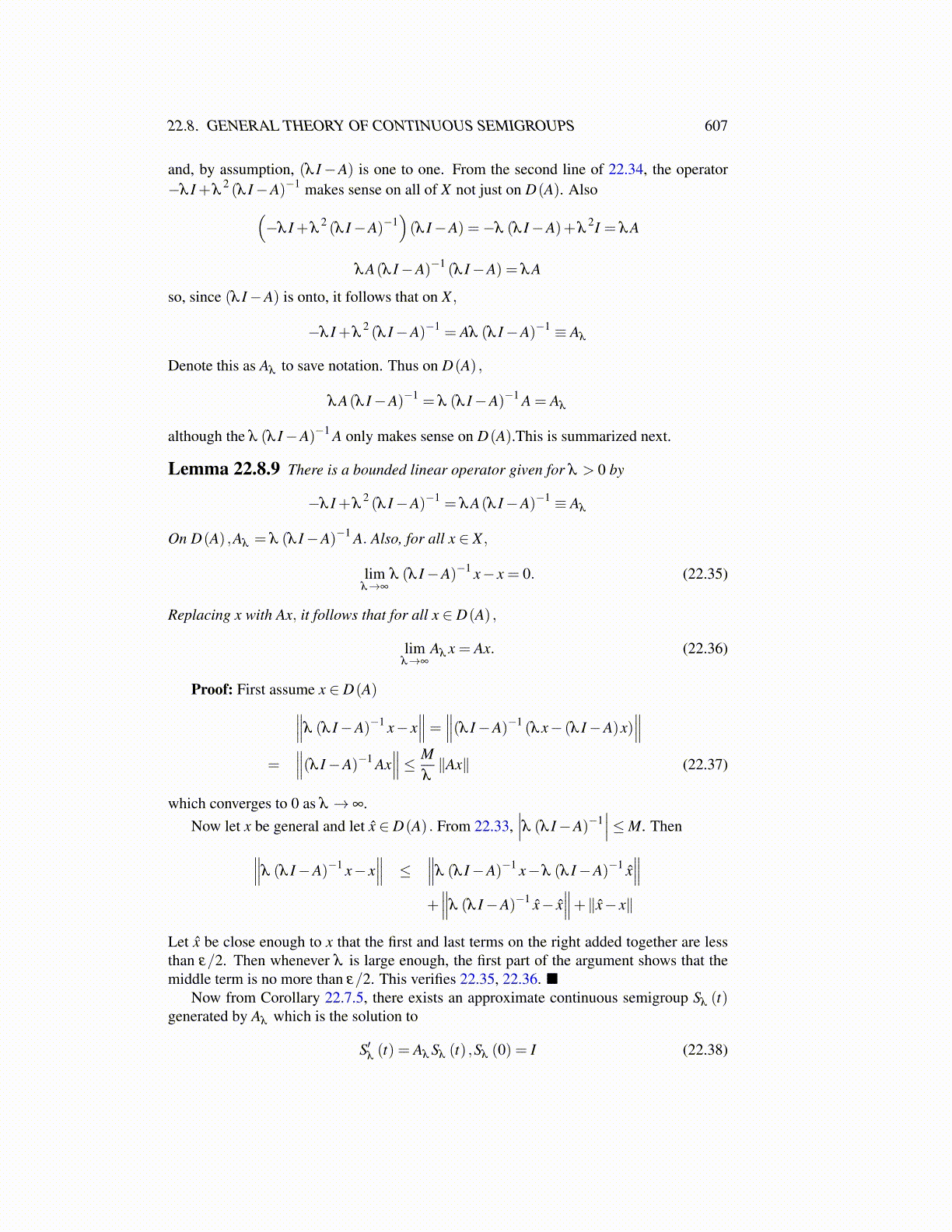
22.8. GENERAL THEORY OF CONTINUOUS SEMIGROUPS 607
and, by assumption, (λ I−A) is one to one. From the second line of 22.34, the operator−λ I +λ
2 (λ I−A)−1 makes sense on all of X not just on D(A). Also(−λ I +λ
2 (λ I−A)−1)(λ I−A) =−λ (λ I−A)+λ
2I = λA
λA(λ I−A)−1 (λ I−A) = λA
so, since (λ I−A) is onto, it follows that on X ,
−λ I +λ2 (λ I−A)−1 = Aλ (λ I−A)−1 ≡ Aλ
Denote this as Aλ to save notation. Thus on D(A) ,
λA(λ I−A)−1 = λ (λ I−A)−1 A = Aλ
although the λ (λ I−A)−1 A only makes sense on D(A).This is summarized next.
Lemma 22.8.9 There is a bounded linear operator given for λ > 0 by
−λ I +λ2 (λ I−A)−1 = λA(λ I−A)−1 ≡ Aλ
On D(A) ,Aλ = λ (λ I−A)−1 A. Also, for all x ∈ X ,
limλ→∞
λ (λ I−A)−1 x− x = 0. (22.35)
Replacing x with Ax, it follows that for all x ∈ D(A) ,
limλ→∞
Aλ x = Ax. (22.36)
Proof: First assume x ∈ D(A)∥∥∥λ (λ I−A)−1 x− x∥∥∥= ∥∥∥(λ I−A)−1 (λx− (λ I−A)x)
∥∥∥=
∥∥∥(λ I−A)−1 Ax∥∥∥≤ M
λ∥Ax∥ (22.37)
which converges to 0 as λ → ∞.Now let x be general and let x̂ ∈ D(A) . From 22.33,
∣∣∣λ (λ I−A)−1∣∣∣≤M. Then∥∥∥λ (λ I−A)−1 x− x
∥∥∥ ≤∥∥∥λ (λ I−A)−1 x−λ (λ I−A)−1 x̂
∥∥∥+∥∥∥λ (λ I−A)−1 x̂− x̂
∥∥∥+∥x̂− x∥
Let x̂ be close enough to x that the first and last terms on the right added together are lessthan ε/2. Then whenever λ is large enough, the first part of the argument shows that themiddle term is no more than ε/2. This verifies 22.35, 22.36. ■
Now from Corollary 22.7.5, there exists an approximate continuous semigroup Sλ (t)generated by Aλ which is the solution to
S′λ(t) = Aλ Sλ (t) ,Sλ (0) = I (22.38)